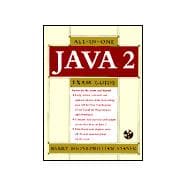-- Both exams in one book -- Sun Microsystems, the creator of Java, has two Java Certification Exam -- one for programmers and one for developers. This Study Guide is the ultimate authority for both of the Java tests.
-- What's needed to pass the exam -- Fast and focused method for learning exactly what you need to pass both the Sun Certified Java 2 Programmer and Developer exams.
-- Complete Update -- This comprehensive exam guide for experienced Java programmers and developers has been fully revised, reviewed, and updated to cover every aspect of Java 2, the latest release. It includes exercises and hundreds of sample test questions.
-- Experienced/Qualified Author -- Barry Boone is a Sun Certified Java Programmer and Java Developer
-- CD-ROM -- JCertifiy test engine that includes hundreds of questions to help readers prepare for the exam.








